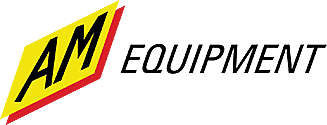
AM Equipment
Based in the quaint town of Jefferson, Oregon, AM Equipment is a global provider serving a wide range of industries, from mass transit to robotics. Our focus is on delivering top-notch motion control solutions that are not only superior in quality but also cost-effective throughout their lifecycle. As a family-owned business since 1953, we have been ISO 9001:2015 certified since 2002. Our expertise lies in developing specialized electrical motor systems that are compact, robust, and capable of withstanding extreme temperatures. Additionally, we specialize in catering to the unique needs of high-volume customers by offering tailored engineering services.
Motors - AC, DC
Results:
5
Series
Diameter - Shaft
Voltage - Rated
Torque - Rated (oz-in / mNm)
Function
Type
Power - Rated
Motor Type
Encoder Type
Size / Dimension
RPM
Results remaining:5
Applied Filters:
AM Equipment
About Motors - AC, DC
AC and DC motors are electromechanical devices that convert electrical energy into mechanical motion or vibration. These motors are widely used in various applications where precise control over movement is required. Brushed DC motors are one of the most common types of motors. They consist of a rotor (also known as an armature), a stator, and brushes that make contact with the commutator. When a current is applied to the brushes, it creates a magnetic field that interacts with the permanent magnets on the rotor, causing it to rotate. Brushless DC motors, on the other hand, eliminate the need for brushes and commutators. Instead, they use electronic controllers to switch the direction of current flow in the stator windings, creating a rotating magnetic field that drives the rotor. Brushless DC motors offer advantages such as higher efficiency, longer lifespan, and reduced maintenance. Stepper motors are often used in applications that require precise positioning. They divide a full rotation into a series of steps, allowing for accurate control over angular displacement. Stepper motors can be controlled in open-loop or closed-loop systems, providing excellent control accuracy. Linear actuators are devices that produce linear motion. They are commonly used in applications that require controlled movement along a straight line. Linear actuators can be driven by AC or DC motors, and they can provide precise and repeatable linear motion. Servo motors are widely used in industrial automation and hobbyist applications. They offer high torque and speed control capabilities. Servo motors use feedback control systems to achieve accurate position, velocity, and torque control. They are commonly found in robotics, CNC machines, and remote-controlled vehicles. Vibration generating motors are specialized motors used in haptic applications, such as in smartphones, gaming controllers, and wearable devices. These motors create vibrations or vibrations with variable intensities, providing tactile feedback to the user. In summary, AC and DC motors are electromechanical devices that convert electrical energy into mechanical motion or vibration. This family includes brushed and brushless DC motors, stepper motors, linear actuators, servo motors, and vibration generating motors. Each type of motor has its own unique characteristics and is suitable for specific applications that require precise control over movement or vibration.


